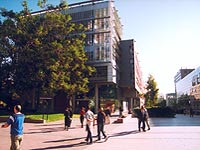|
 |
|
 |
| |
| |
| |
| |
| |
| |
| |
Campus: Kensington Campus
| |
| |
Career: Undergraduate
| |
| |
Units of Credit: 6
| |
| |
| |
| |
Indicative Contact Hours per Week: 3
| |
| |
Enrolment Requirements:
| |
| |
Prerequisite: 36 units of credit or enrolment in Diploma of Education Program
| |
| |
Excluded: GENT1522, LING2700, LING3901
| |
| |
| |
| |
| |
 |
|
 |
Description
Introduces students to theories of second language learning, similarities and differences between first and second language learning, language varieties and social attitudes, differences between community and classroom learning, and the implications for language teaching and learning. Uses current research to identify likely areas of difficulty in language learning and effective teaching strategies for language learners including English as Second Language learners.
Learning Outcomes
By the end of this course, students should be able to:
- Compare and contrast different definitions and conceptions of language and literacy and their implications for teaching practice
- Describe sources of variation in language and how they are relevant to teaching
- Identify features of aboriginal English
- Explain basic physical, physiological and psychological processes involved in listening and speaking for teachers and students, including esl students
- Discuss findings from research literature on question types and questioning and answering in classrooms
- Explain the differences between various theories of how people learn to read, including second language learners
- Identify the theoretical position of writers who are discussing reading issues
- Discuss research evidence for / against different theories of reading
- Compare and contrast different definitions of grammar
- Identify text types and describe features of their grammar in terms of functional grammar and traditional grammar
- Give historical reasons why English spelling, punctuation and word-formation are the way they are
- Describe the relationship between spelling and reading.
Assessment
- Quiz - 10%
- Collaborative tutorial presentation - 10%
- Essay (2500 words) - 30%
- Final exam - 50%
|



